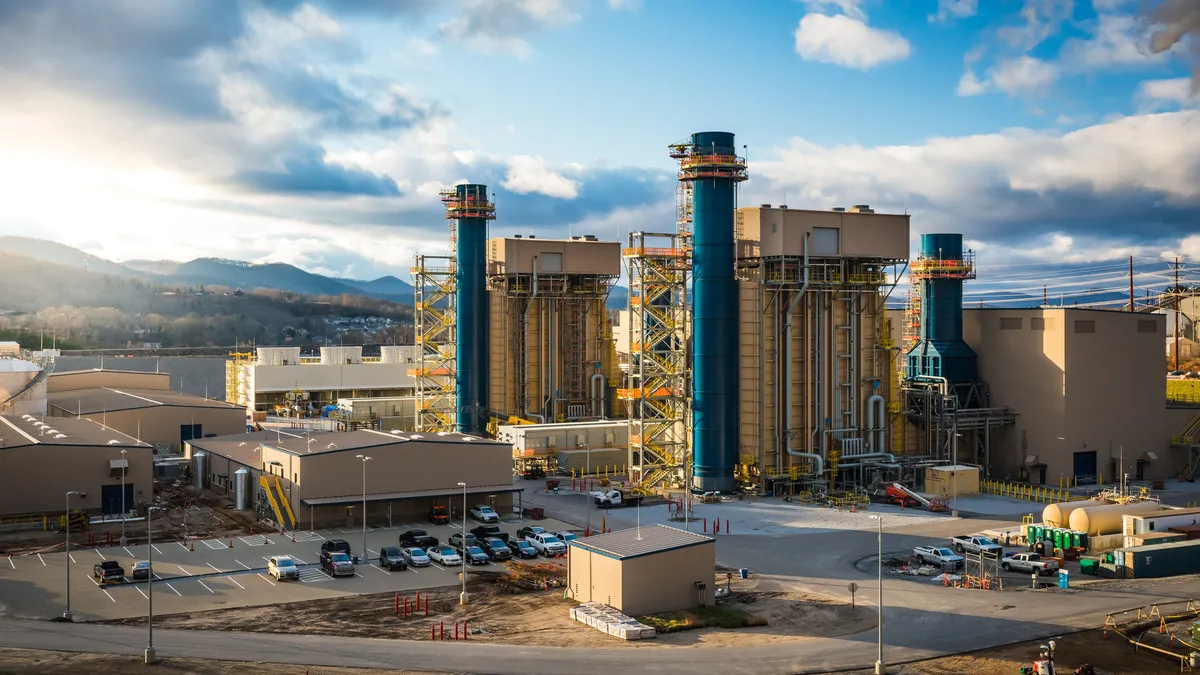The Environmental Protection Agency’s proposal to cut carbon emissions from power plants violates the Clean Air Act and threatens grid reliability, according to utility and power trade groups.
The National Rural Electric Cooperative Association said the proposal should be scrapped while the others suggested ways they said would improve it, including extending compliance deadlines, according to comments filed with the EPA on Tuesday.
The American Public Power Association, the Edison Electric Institute, NRECA and the Electric Power Supply Association, or EPSA, said the main compliance options for meeting the proposed standards — using “green” hydrogen as a fuel and carbon capture and sequestration — may be infeasible under the EPA’s proposed deadlines given the emerging state of those technologies.
“EPA’s rulemaking record simultaneously downplays the various infrastructure challenges to deploying these technologies, while overplaying the current state of deployment and demonstration of each technology,” EEI, a trade group for investor-owned utilities, said.
In May, the EPA proposed greenhouse gas emissions limits for coal-, gas- and oil-fired power plants, with initial requirements beginning in 2030 for coal-fired generators and 2032 for gas-fired units. The limits can be met by highly-efficient operations, carbon capture and sequestration, co-firing natural gas for coal units, and with green hydrogen for gas generators, according to the proposal.
The proposal requires coal-fired power plants that intend to operate past 2039 to install CCS that captures 90% of carbon emissions. Coal plants that plan to retire by 2035 and run at no more than a 20% capacity factor and units that will be shuttered before 2032 don’t face GHG emissions limits.
Gas-fired combustion turbines larger that 300 MW and with at least a 50% capacity factor have two compliance options: CCS with 90% carbon capture by 2035, or co-firing of 30% low-GHG hydrogen beginning in 2032 and co-firing 96% starting in 2038, according to the agency.
The power sector accounts for about a quarter of U.S. carbon emissions, according to the EPA.
EEI says parts of plan offer ‘positive framework’
Parts of the EPA’s proposal offer a “positive framework” for reducing carbon emissions from power plants, but major changes are needed, according to EEI.
“The proposed … rules are an important piece of the regulatory framework that could support the power sector’s continuing clean energy transformation, including the deployment of new clean technologies,” EEI said.
However, the EPA’s conclusion that CCS or hydrogen blending are the “best system of emission reduction” isn’t legally supported, according to EEI. “The record lacks substantial evidence showing that these technologies are currently demonstrated at scale, or could be demonstrated at scale in a commercial setting,” findings that are needed for them to be used to set emissions standards, the trade group said.
The EPA should state that it will use enforcement discretion for units that install or try to install new technologies like CCS or hydrogen blending if they don’t perform as expected or are not available on the timelines EPA predicts, EEI said.
Plan violates ‘major questions’ doctrine: NRECA
The NRECA echoed EEI’s concerns about the status of hydrogen and CCS technologies.
“EPA couples these inadequately demonstrated technologies with unworkable timelines that will be impossible to achieve,” the trade group said. “The agency also substantially underestimates what it would cost to comply — assuming compliance is even possible.”
Besides violating the Clean Air Act by basing emissions standards on technology that isn’t currently achievable, the proposal violates the so-called “major questions” doctrine, which holds that a federal agency lacks authority to make decisions of “vast economic and political significance” without clear direction from Congress, NRECA said.
The proposal would likely lead to the use of smaller, less-efficient gas-fired units as power plant owners seek to come under a 300-MW size threshold to avoid the regulations, according to NRECA.
APPA urges 2-year deadline extensions
APPA, a trade group for municipal and other public power utilities, urged the EPA to push back the proposal’s deadlines by at least two years to give utilities and others more time to build new generation and ease reliability concerns.
Besides not meeting legal standards under the Clean Air Act, the proposal would hurt electric reliability and affordability, according to the APPA.
The trade group urged the EPA to consider how factors, such as the growth in electric vehicles and heat pumps, can affect electric reliability and affordability.
The EPA should examine how environmental justice communities could be affected by decreased electric reliability and less affordable electricity, according to the APPA. “Environmental justice concerns further support the need for EPA to create a model trading rule because studies have shown that cap-and-trade policies positively impact environmental justice communities,” the trade group said.
EPA underestimates likely plant retirements: EPSA
The EPA underestimated how much gas- and coal-fired capacity would retire because of the proposed standards according to EPSA, a trade group for competitive power suppliers.
“At a time when our nation should be retaining needed existing resources and investing in new infrastructure in response to policy decisions which are driving an increase in electricity demand, this proposal will likely force a substantial amount of generation to either run less (to avoid meeting the threshold of applicability of emissions standards for this rulemaking) or pull the plug on their power plants entirely,” EPSA said in its comments.
Although wind and solar resources will make up a growing share of U.S. electricity production, gas-fired power plants will be needed to supply electricity when those intermittent resources aren’t producing power, according to the trade group.
Also, EPSA said the EPA underestimated electricity demand growth. “Electrification policies will require significantly more electricity production than is currently available, and efforts should focus on how to expand, not restrict, power generation,” the trade group said.






















